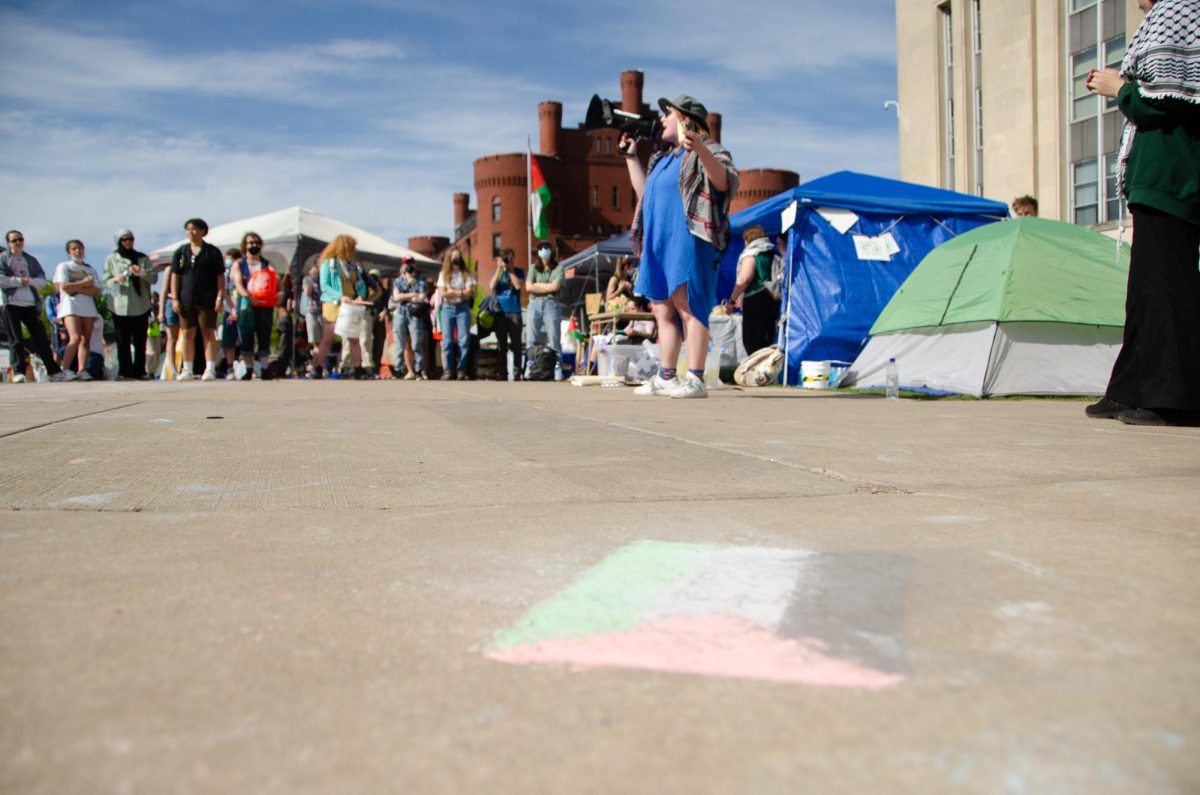Competition &
Collaboration: Japanese Prints and the
School is the massive new exhibit running through Jan. 6 in the Chazen
Museum of Art, displaying Japanese woodblock prints, or ukiyo-e, that
flourished in the "floating world" culture of Edo-period
exhibit is comprised of the
of
collection, reputed to be the eighth largest collection of ukiyo-e prints in the
artists in the
associated with hundreds of artists who lived almost two centuries ago.
Utagawa artists are responsible for more than half of all ukiyo-e
prints, which are still extant, and they are a testament to both the school's
enduring popularity as well as its size and copious output. Consequently, the
history of aesthetic and technical evolution in the
is also the history of ukiyo-e as a whole, with the exhibit encompassing a wide
range of genres and styles. From the warrior prints of Kuniyoshi to the famous
landscapes of Hiroshige, almost every style of ukiyo-e print is represented, even sneaking in a little shunga — explicit,
anonymous pornographic prints usually swept under the rug in academic
exhibitions — for good measure.
The scope of the exhibit seems to have necessitated
splitting the exhibit into six "sections," each print separated into its own
group and period and subtly color-coded by its accompanying, invaluably
informative text. The resulting effect is a chronological narrative of the
counterclockwise around the two large gallery rooms.
The exhibit begins with Utagawa Toyoharu, the artist who
founded the
of the 18th century. His prints, depicting festivals and Kabuki theatre
performances from a one-point perspective "floating" over its subject, laid the
foundation for a uniquely ukiyo-e style
of landscape prints. Next comes Toyohiro and Toyokuni, who both excelled in the
genres of actor prints and "beautiful women," or bijin-ga. Toyokuni's "A View
of Cherry Blossoms at the New Yoshiwara," a stunning five-sheet print, is
exemplary of this style. Displaying a procession of courtesans — high-class
prostitutes of
quarters — dressed in colorful, intricately designed kimonos passing under
cherry trees in bloom, the print's focus is on graceful refinement, the cherry
blossoms colored a delicate pink and embossed onto the paper itself.
Hiroshige, Kuniyoshi and Kunisada are all substantially
represented in the exhibit — to no surprise, given that each achieved immense
fame in the 19th century for their respective talents at designing prints of
landscapes, warriors and actors. Of
particular note is Kunisada's "The Actor Ichikawa Danjuro VII in a Shibaraku
Role," a striking depiction of the celebrated "rough"-style actor of the Kabuki
stage. The print showcases a nervous intensity created in the sharp, angular
lines of the actor's solid-red clothing as he crosses his eyes and freezes in
an exaggerated pose.
Hiroshige's landscapes are the ukiyo-e prints with perhaps the
widest fame among the general populace, and the exhibit seems to
conscientiously buck this characterization by presenting much of Hiroshige's
lesser-known work, from illustrations of historical events to many close-up
depictions of courtesans. Despite these attempts, however, it is nonetheless
his landscapes that stand out the most in the exhibit. One landscape is his
vertical diptych "Snowy Gorge at
bird's-eye view of jutting, snowy peaks while two small boats traverse the
precarious, deep-blue water below. Another, "Nihon Bridge and Edo Bridge," from
the mid-19th century, is designed from the curious first-person perspective
of someone standing on the Nihon Bridge, leaning over the railing and peering
down into the harbor below. Perhaps the most stunning, however, is "Taira no
Kiyomori Haunted by Snow Specters," which shows the villain of Japan's warrior
epic "The Tales of the Heike," looking out from his Edo-style veranda at a
snowy garden, seeing the ghosts of those he had murdered in the hallucinatory
and disturbingly shaped piles of snow. The result is a brilliant, Dalí-like
scene of human subjectivity twisting the shape of the traditional landscape.
The exhibit and ukiyo-e itself ends in the Meiji period of 19th-century
Japan, where westernization and technological advances in photography and
lithography led to quicker, more efficient means of producing imagery for mass
consumption, eventually leading to the demise of ukiyo-e's labor-intensive
prints. In this period, Tsukioka Yoshitoshi was one of the last stylistic
holdouts to traditional woodblock techniques and subject matter, as seen in
"Watanabe no Tsuna Cutting off the Demon's Arm at Rashomon Gate," 1888. This
pillar print of the warrior Tsuna, fighting a demon that was believed to have
haunted the historic Rashomon Gate, exemplifies Yoshitoshi's beautiful
treatment of violence through dynamic, dance-like movement and astonishingly
vibrant color.














